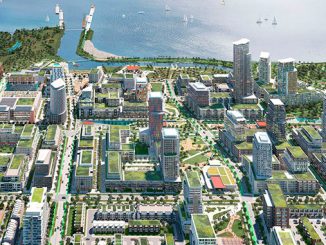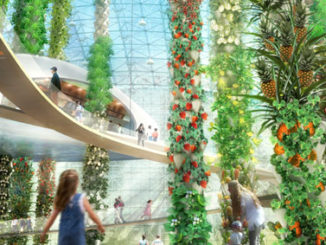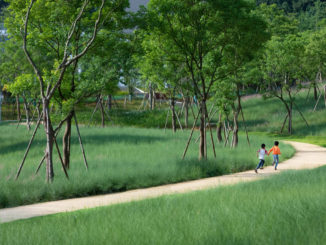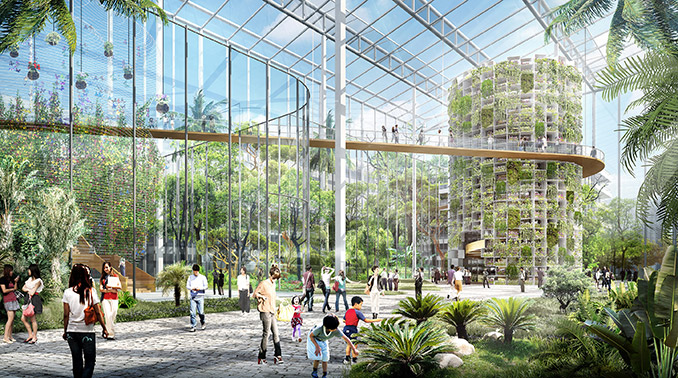
Shanghai is home to nearly 24 million people. That’s a lot of mouths to feed. But over the last two decades, China has lost over 123,000 square kilometers of farmland to urbanization—a land area equivalent to nearly the entire state of Iowa. Of the arable land that remains, it is estimated by China’s own Ministry of Environmental Protection that one-sixth of this land—roughly 200,000 square kilometers—suffers from soil pollution. Something’s gotta give.
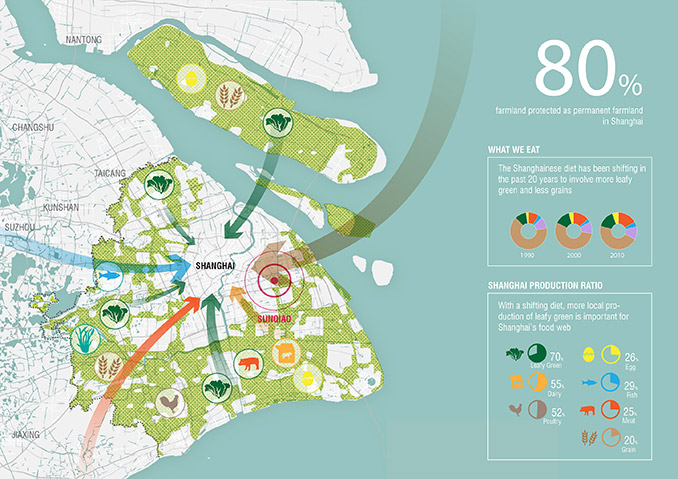
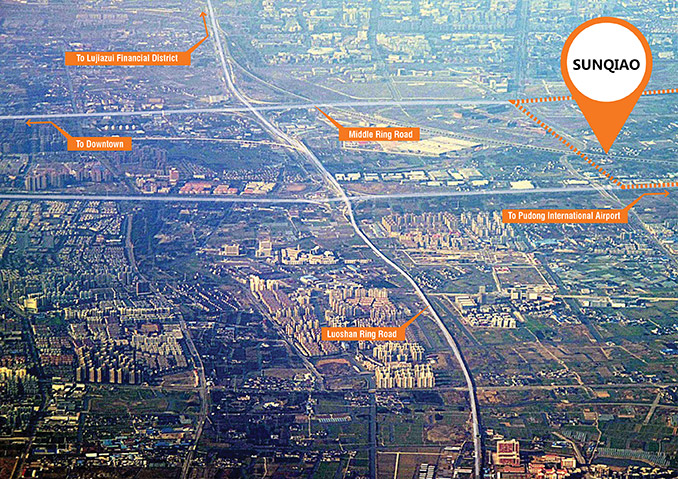
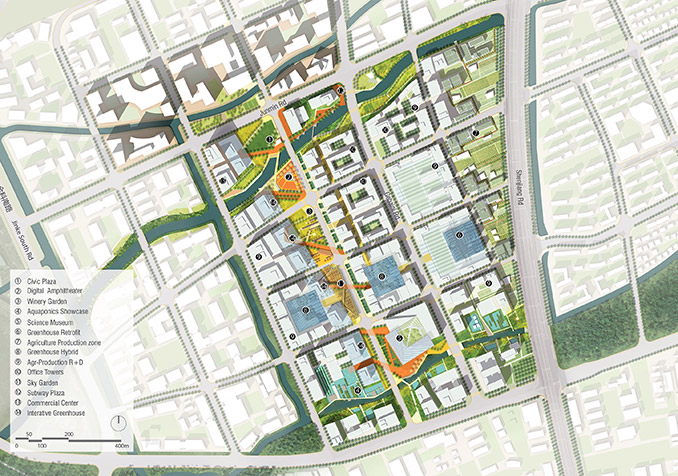
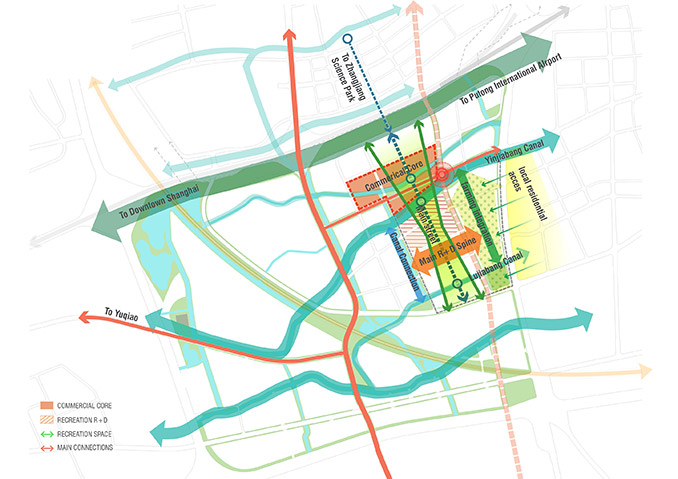
As one of Asia’s most dynamic megacities, Shanghai is actively encouraging innovative solutions to provide food for the growing region. Unlike Western examples of large-scale corporate farms which are typically located great distances from cities, smaller scale agriculture dominates Shanghai’s peri-urban landscape. This progressive approach has historically allowed the growing metropolis to carefully manage agricultural resources, while also ensuring greater agricultural biodiversity. Like other cities in China, however, rapid growth is threatening this long-established system, resulting in a significant loss of agricultural land within city limits. Sunqiao—a new approach to urban agriculture—seeks to shift the paradigm.
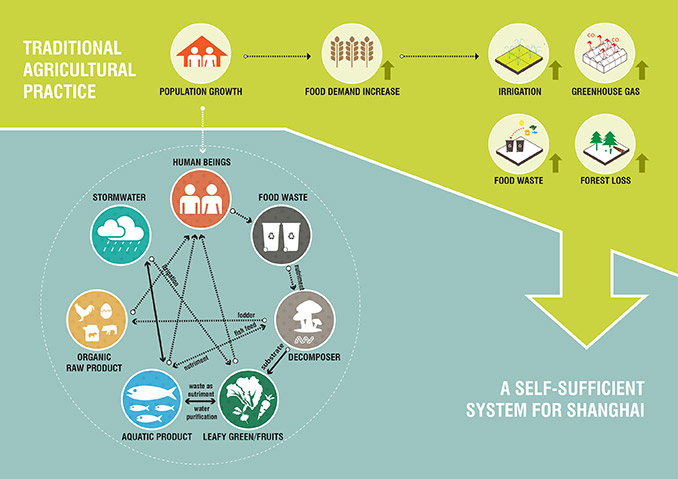
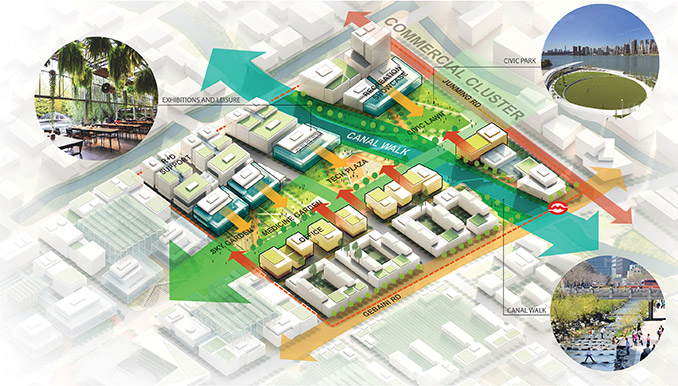
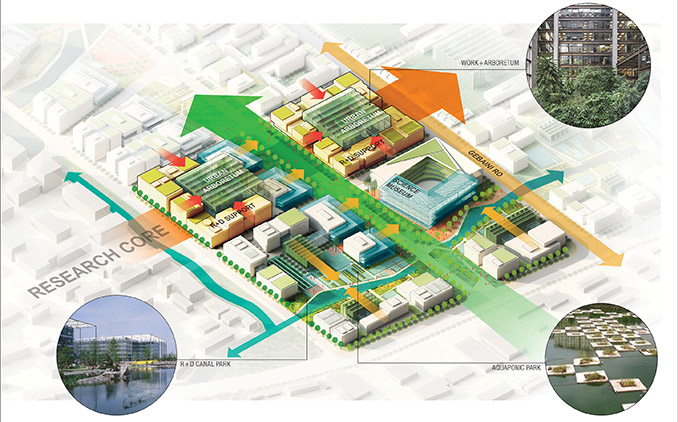
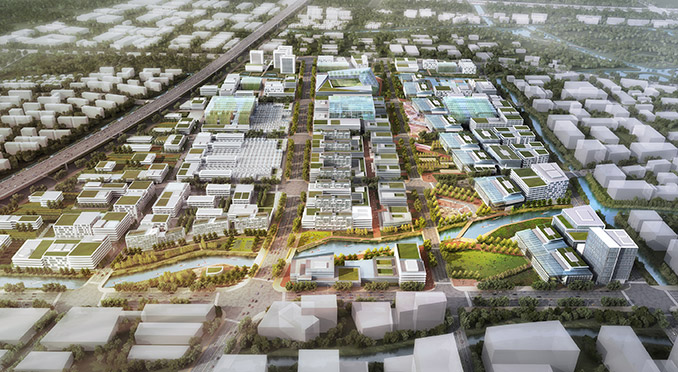
Located between Shanghai’s main international airport and the city center, Sunqiao illustrates that, like the city’s soaring skyscrapers, its farms are also going vertical. After 20 years of conventional agricultural production on the site, Shanghai is expanding the role of Sunqiao in its foodshed. The new plan for the district, slated to begin construction in late 2017, focuses on the integration of vertical farming systems in conjunction with research and public outreach. The result is an interactive, playful, and socially-engaging experience that presents urban agriculture as a dynamic living laboratory for innovation and education.
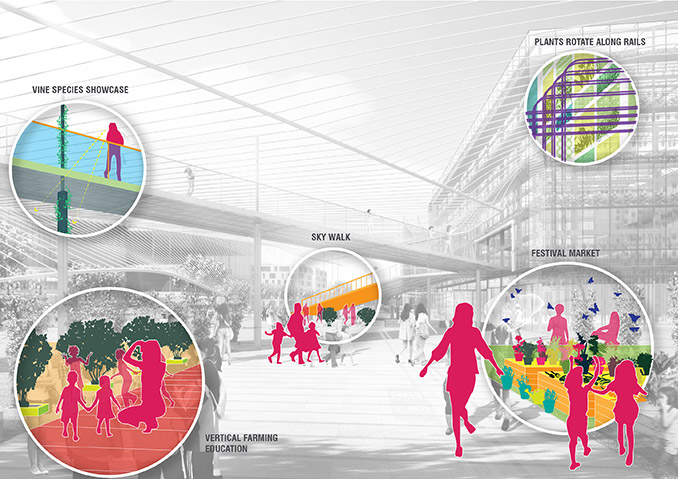
Shanghai is the ideal context for vertical farming. Like many global cities, land prices are high, which makes building up rather than out the economically prudent choice. Even more significant is the Shanghainese diet, which typically consists of up to 56% leafy greens. Think spinach, lettuce, kale, arugula, mustard greens, bok choi, watercress, etc. Leafy greens are also an excellent choice for hydroponic and aquaponics growing systems. They thrive in the simplest of setups, and don’t need a lot of extra attention. They grow quickly and weigh little, both of which make them an economical and efficient option.
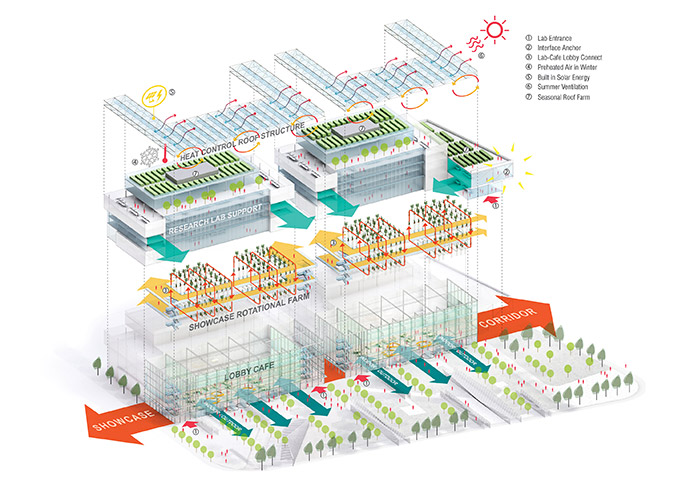
While one goal is to position Shanghai as a leader in urban food production, Sunqiao is more than simply creating vertical food factories. Providing a robust public realm that merges indoor and outdoor agricultural experiences, the Sunqiao experiment presents a new idea for urban life by celebrating food production as one of the most important functions of a city. Sunqiao not only addresses Shanghai’s increasing demand for locally-sourced food, but also educates generations of urban children about where their food comes from.
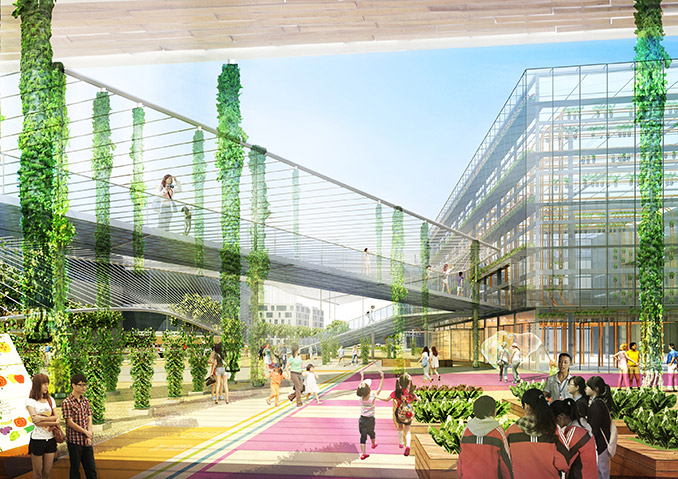
In the United States, hydroponic systems are still thought of as science fiction, and vertical farms are more often seen in slick architectural renderings than in reality. Without a proven track record, developers hesitate incorporating vertical urban farms into their projects until someone else can prove that it is a lucrative undertaking. Understanding the motivation to build a project like Sunqiao, however, requires an awareness of the Chinese agricultural context. Although most of us in the Western world think of the “Made in China” economy as being driven by manufacturing, China is actually the world’s largest producer and consumer of agricultural products. In fact, the agricultural sector represents approximately 13% of China’s total Gross Domestic Product. In the United States, agriculture accounts for about 5.7% of GDP. Agriculture in China is also responsible for feeding 20% of the world’s population and employing 22% of Chinese citizens.
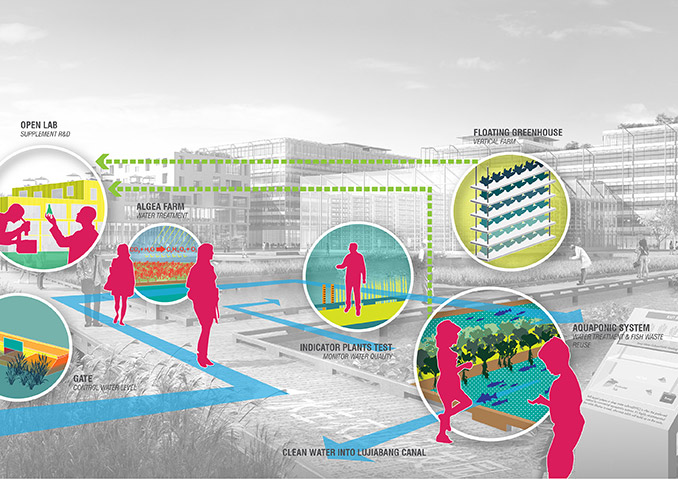
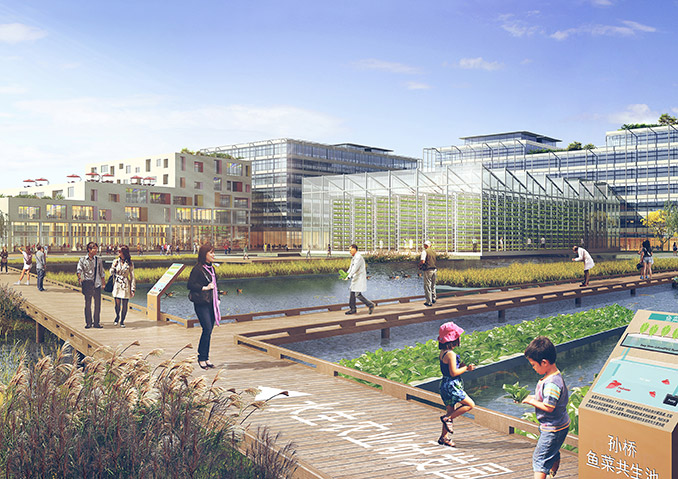
In recent decades, China’s focus on agricultural protection policies have contributed to significant reductions in poverty and increasing food security. New industries that benefit from access to agriculture— biotech, textiles, etc. —are thriving and contributing to China’s enviable economic growth. National-level investments in agriculture through modernization and mechanization are also compensating for the overall reduction in arable land. Traditional agriculture, however, faces increasing challenges with respect to increasing pressure on natural resources. Water shortages, deforestation, soil pollution, and various inefficiencies are impacting the status quo of small farms.
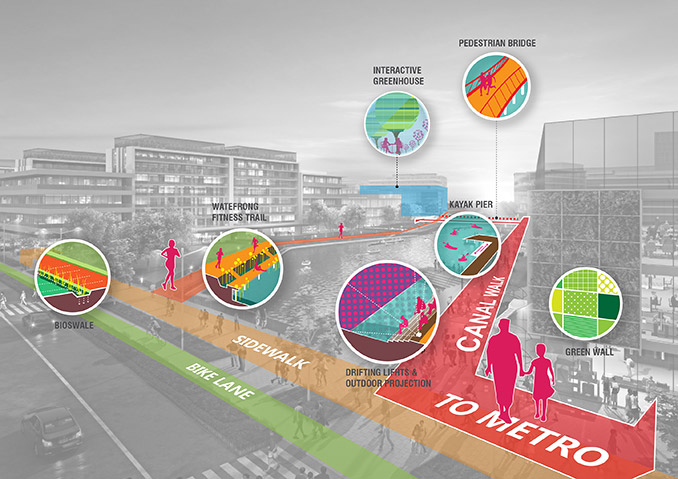
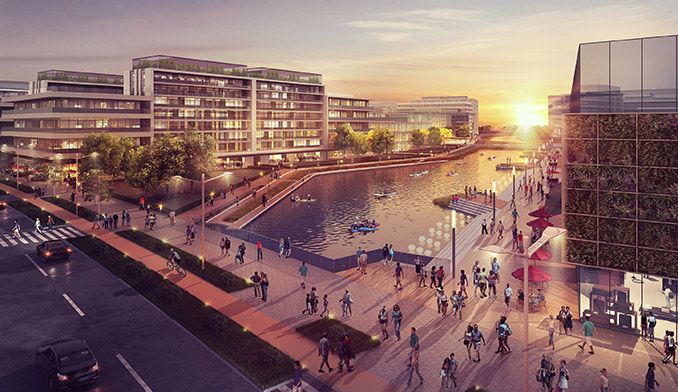
Ever the progressive city, Shanghai has made a persistent effort to safeguard both food and farmers by taking control of local production and distribution while preserving farmland within city limits. This system creates efficiencies, reduces costs, and protects the traditional lifeblood of local farmers. Sunqiao enhances this policy, merging larger economic interests of ensuring that agriculture contributes to a more robust economy with the benefits of small, localized farms. With land prices making traditional horizontal farming an endeavor with little room for profit, Sunqiao illustrates how the Chinese government’s strategy of preserving land for agricultural purposes can also provide a higher and better use. This approach actively supports a more sustainable local food network while increasing quality of life in the city through a community program of restaurants, markets, a culinary academy, and pick-your-own experiences. As cities continue to expand, we must continue to challenge the dichotomy between what is urban and what is rural. Sunqiao seeks to prove that you can have your kale and eat it too.
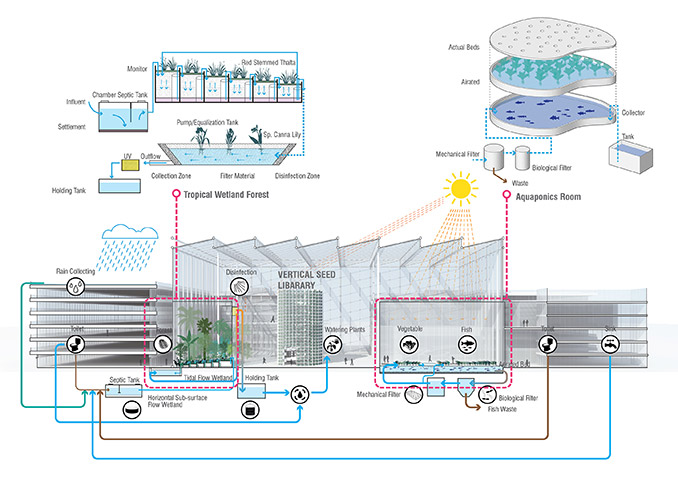
Sunqiao Urban Agricultural District
Location | Shanghai, China
Design Firm | Sasaki
Project Area | 100 Hectares
Completion Date | 2016 (Master Plan)
Image Credits | Sasaki

